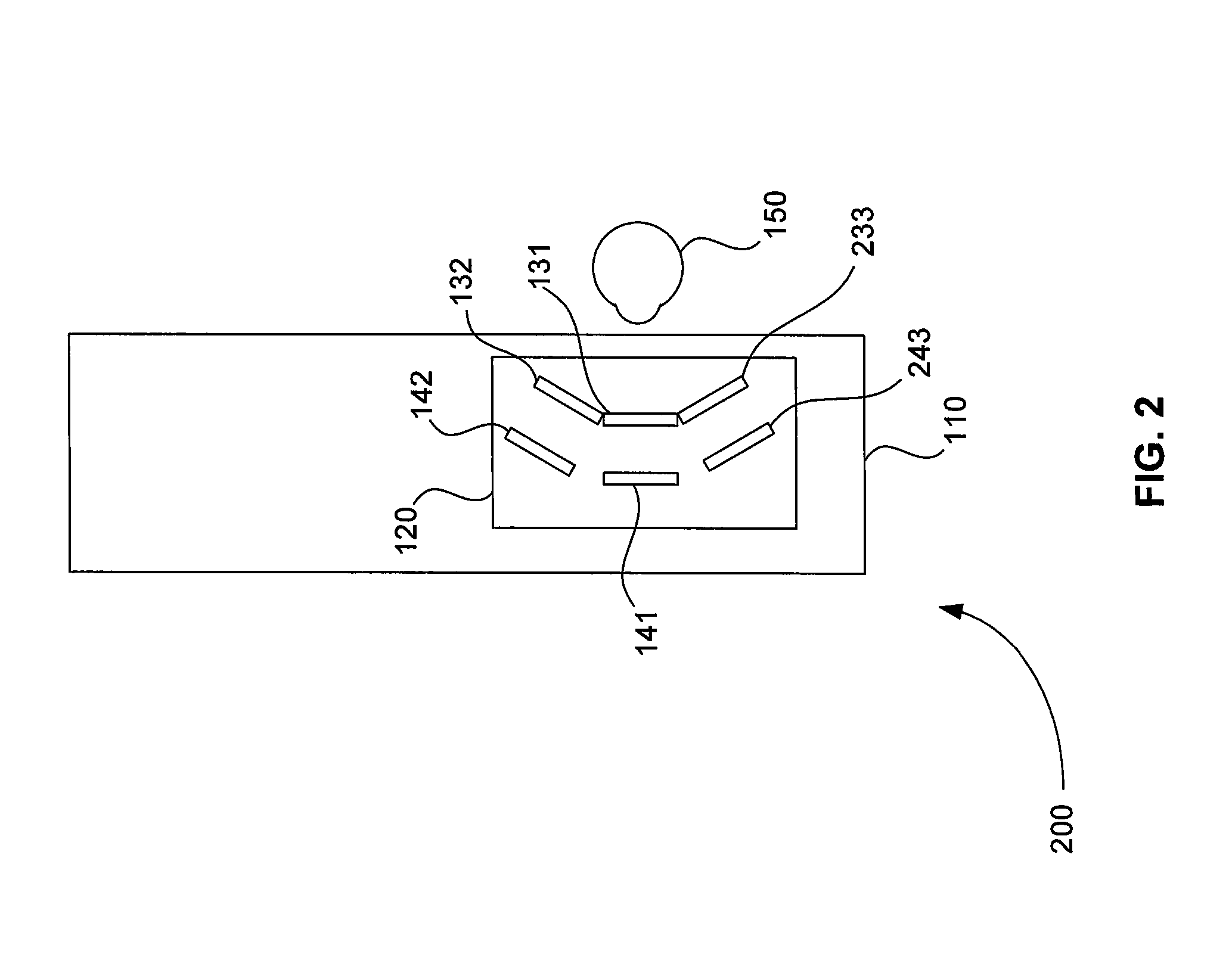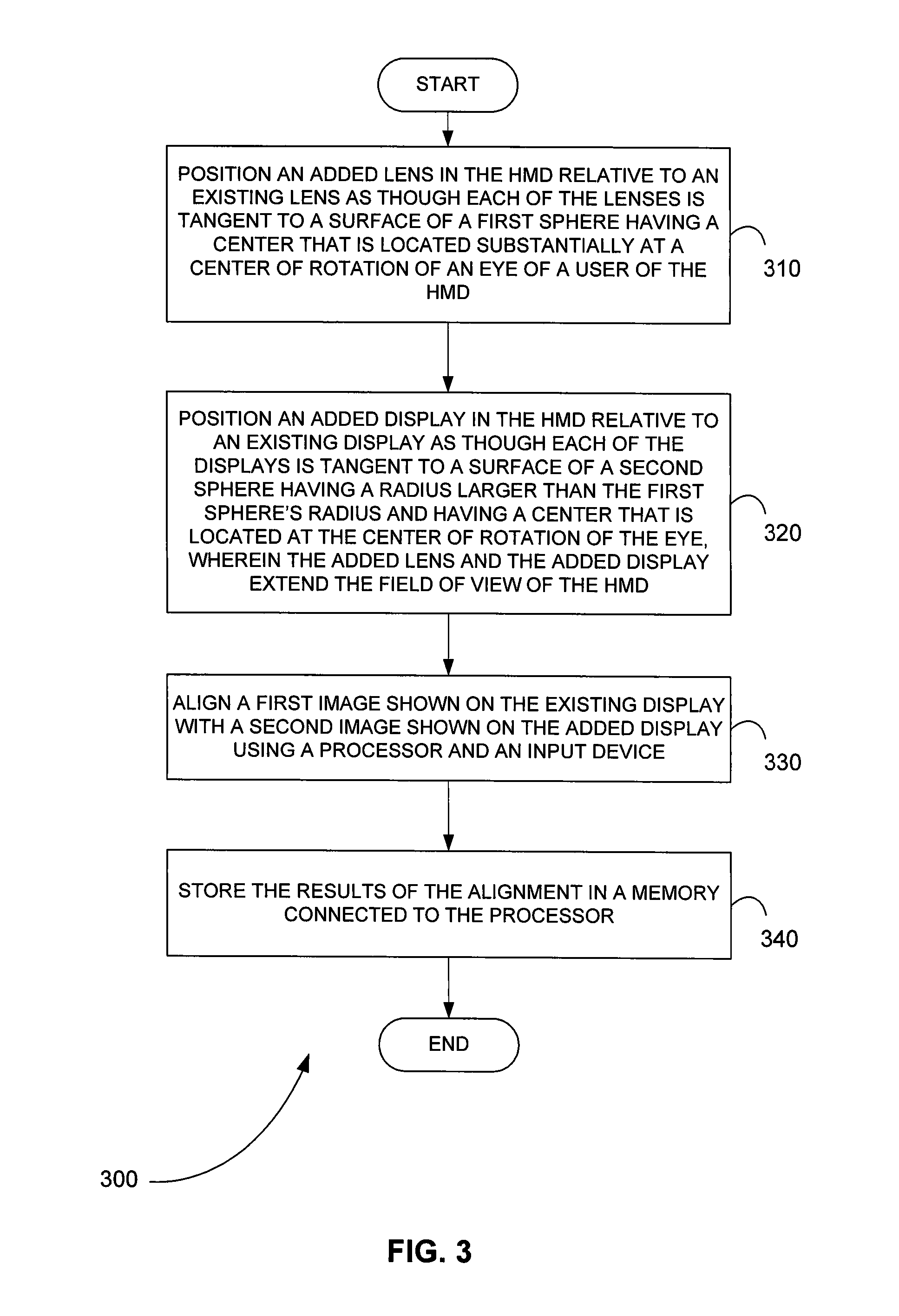Systems and methods for a head-mounted display
a technology of video display and head-mounted display, which is applied in the field of system and method of head-mounted video display, can solve the problems of limited acceptance of virtual reality systems, distortion of visual perception, and increased head movements to scan a visual environment,
- Summary
- Abstract
- Description
- Claims
- Application Information
AI Technical Summary
Benefits of technology
Problems solved by technology
Method used
Image
Examples
Embodiment Construction
[0028] A tiled multiple display HMD is described in U.S. Pat. No. 6,529,331 (“the '331 patent”), which is herein incorporated by reference in its entirety. The HMD of the '331 patent solved many of the problems of the FIHMD, while achieving both high visual resolution and a full field of view (FOV). The HMD of the '331 patent used an optical system in which the video displays and corresponding lenses were positioned tangent to hemispheres with centers located at the centers of rotation of a user's eyes. Centering the optical system on the center of rotation of the eye was the principal feature of the HMD of the '331 patent that allowed it to achieve both high fidelity visual resolution and a full FOV without compromising visual resolution.
[0029] The HMD of the '331 patent used a simpler optical design than that used by the FIHMD. The HMD of the '331 patent used an array of lens facets that were positioned tangent to the surface of a sphere. The center of the sphere was located at a...
PUM
 Login to View More
Login to View More Abstract
Description
Claims
Application Information
 Login to View More
Login to View More - R&D
- Intellectual Property
- Life Sciences
- Materials
- Tech Scout
- Unparalleled Data Quality
- Higher Quality Content
- 60% Fewer Hallucinations
Browse by: Latest US Patents, China's latest patents, Technical Efficacy Thesaurus, Application Domain, Technology Topic, Popular Technical Reports.
© 2025 PatSnap. All rights reserved.Legal|Privacy policy|Modern Slavery Act Transparency Statement|Sitemap|About US| Contact US: help@patsnap.com



